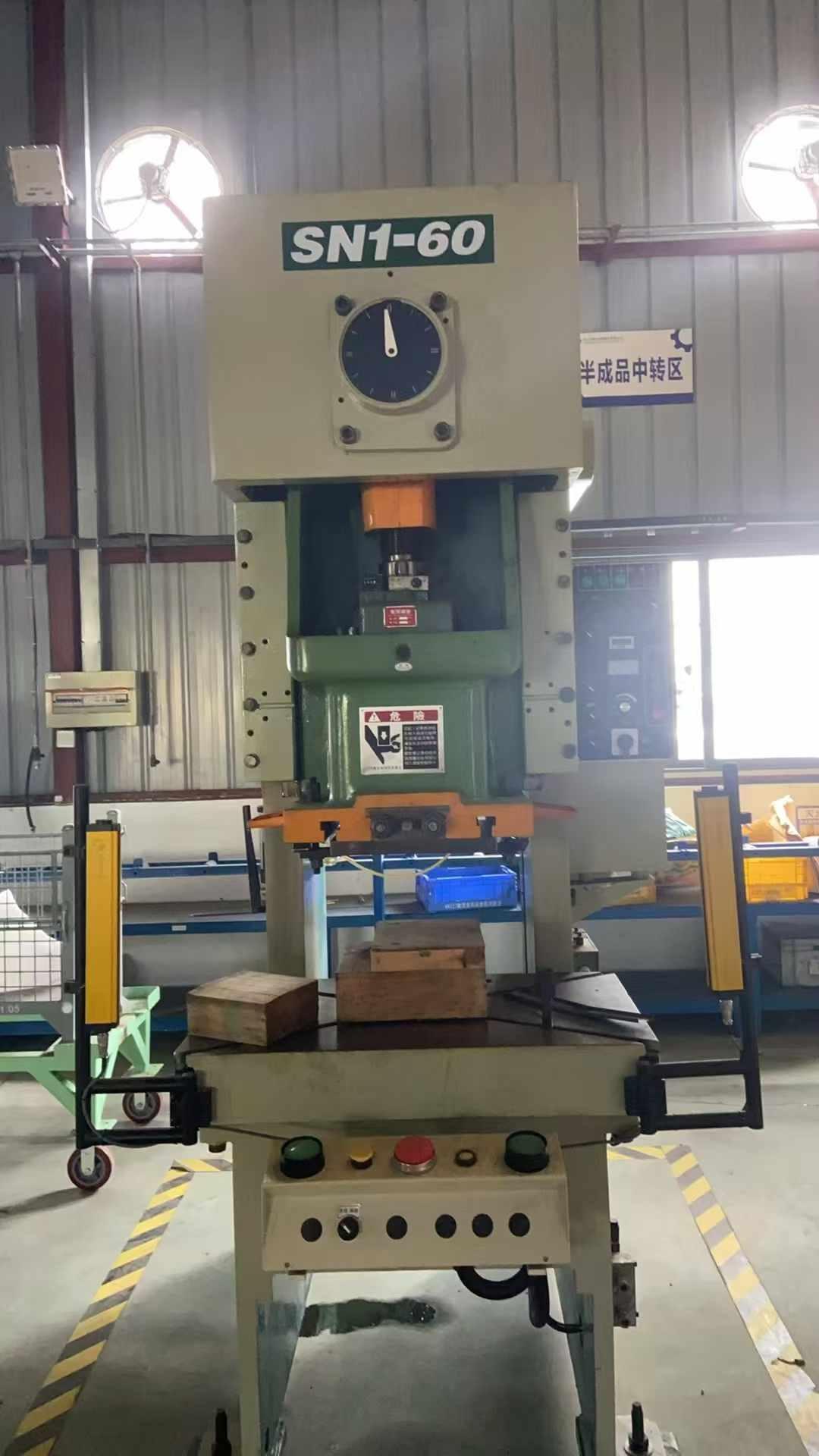What should I pay attention to when buying a second-hand punch press?
When purchasing a second-hand punch press, you need to pay attention to the following aspects:
1. Equipment performance inspection
Accuracy testing
-Check the stroke accuracy of the slider, including whether the up and down movement of the slider is vertical, which will directly affect the quality of the stamped parts. A dial gauge can be used to measure the perpendicularity between the slider and the worktable. Under normal circumstances, the perpendicularity error should be controlled within a certain range, such as ± 0.1mm/300mm stroke.
-The flatness of the workbench is also crucial, as an uneven workbench can cause unstable placement of the workpiece and affect stamping accuracy. Use a level to check the flatness of the workbench, generally requiring a flatness error between 0.05-0.1mm.
Operation status check
-Conduct an air run test to observe the operation of the punch press in an unloaded state. Pay attention to whether there is any abnormal noise. The normal operation sound of the punch should be smooth and regular. If there are sharp friction sounds, impact sounds, etc., it may indicate wear or looseness of internal parts.
-Check if the movement speed of the slider is uniform. Uneven movement speed of the slider in the punch press can cause instability in the stamping process. Meanwhile, observing the braking performance of the punch press, a good braking system should be able to stop the slider from moving in a short period of time, ensuring safe operation.
Stress testing
-If possible, conduct a pressure test to check if the punch can reach the nominal pressure tonnage. Pressure sensors and other tools can be used to measure the actual pressure, ensuring that the pressure meets the processing requirements. For punch presses with insufficient pressure, it may not be possible to complete stamping work on thicker or harder materials.
2. Equipment quality assessment
Appearance inspection
-Check if there are any obvious deformations, cracks, or repair marks on the punch press body. The integrity of the body structure is crucial for the stability and service life of the punch press. If the body undergoes deformation, it may affect the accuracy and safety of the punch press.
-Check the surface rust of the punch press. Slight surface rust can be cleaned, but severe rust may have already corroded the internal parts. Meanwhile, observing whether the paint has peeled off can also indirectly reflect the equipment's usage environment and maintenance situation.
Component inspection
-Focus on inspecting the wear of key components such as crankshafts, connecting rods, sliders, and guide rails. Worn parts will reduce the performance and accuracy of the punch press. For example, rail wear can cause the slider to move unevenly, increasing maintenance costs. You can manually move the slider to feel the smoothness of its movement and determine the degree of wear on the guide rail.
-Check the working status of the clutch and brake, which are related to the start, stop, and safe operation of the punch press. Check if they can bind and separate properly, and if there is any slipping or malfunction.
3. Equipment history investigation
Service life and frequency
-Understanding the service life of punching machines, generally speaking, punching machines with shorter service life have relatively better performance and accuracy. At the same time, inquire about the frequency of device usage, such as the number of stamping operations per year. If the device is used too frequently, it may lead to increased wear and tear on critical components. Usually, the economic service life of a punch press is around 10-15 years, but the specific situation also depends on factors such as equipment brand and maintenance.
Maintenance and upkeep records
-Require the seller to provide maintenance records of the equipment, including the time and content of regular maintenance, as well as information on the main components replaced. Good maintenance can extend the service life of equipment and improve its reliability. If the equipment lacks regular maintenance, it may hide various potential faults.
Repair history
-Inquire whether the equipment has experienced any major malfunctions, such as crankshaft damage, electrical system failures, etc. Understand the cause of the malfunction, repair time, and the recovery situation after repair. If the equipment has frequent maintenance records, especially those involving critical components, it may affect the performance and stability of the equipment.
4. Safety device inspection
Protective fence and light curtain
-Check if the protective fence around the punch press is complete and secure. The height and clearance of the fence should meet safety standards and effectively prevent operators from coming into contact with hazardous areas. A light curtain is a safety protection device, and when the operator's hands or body obstruct the light curtain, the punch press should immediately stop running. Check the sensitivity and reliability of the light curtain to ensure its normal operation.
Emergency stop button
-Check if the position of the emergency stop button is easy to operate and if the button is sensitive. In emergency situations, operators should be able to quickly press a button to stop the punch press and prevent accidents from occurring. At the same time, test the connection between the emergency stop button and the punch control system to ensure that it can effectively control the operation status of the punch.
5. Price and after-sales service
Price evaluation
-Before purchasing, conduct research on the prices of punching machines of the same brand, model, and similar color in the market. Consider factors such as device performance, service life, and configuration to evaluate whether the price quoted by the seller is reasonable. To avoid losses due to excessively high prices, while also being alert to potential issues with low-priced equipment.
after-sale service
-Understand whether the seller provides after-sales service, such as the warranty period, warranty scope, and repair response time of the equipment. For second-hand equipment, some sellers may provide a certain period of warranty service, which can provide buyers with certain protection. At the same time, ask the seller if they can provide technical support, including equipment operation training, troubleshooting guidance, etc.



